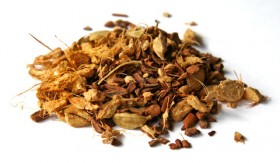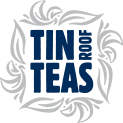What is Chai?

The chai you find in nearly any tea or coffee house has a history that dates back thousands of years. Ancient masala chai (spiced tea) is steeped in tales of royalty, as well as having a long track record for herbal medicine and healing. Evolved over more recent years to include countless variations and as of now, having a worldwide fan base, this is masala chai’s history, beginning where it originated in the ancient kingdoms of South Asia and ending with how it permeated the local coffee and tea scene of America.
Early Years and Spice Benefits
According to lore, masala chai’s history began thousands of years ago in an ancient royal court. Some legends say it was created 9000 years ago, while others say it was 5000. Some of the manuscripts, state the court was located in what is now India, while others attribute masala chai to Thai origins. Nevertheless, it is said that a king created it as a cleansing, vivifying Ayurvedic beverage. If you will notice the main ingredients of this exotic elixir can be found within our Ayurvedic line at Tin Roof Teas. Cardamom pods, cinnamon bark, black pepper, ginger root, clover and nutmeg all make for an invigorating brew.
Even early on, masala chai was made with a wide range of spices and prepared with many different methods. It was served hot or cold as a remedy for mild ailments. At this time, the spicy-sweet drink known as “masala chai” did not contain any tea leaves and was caffeine-free.
Cloves – Used in Ayurvedic medicine as an analgesic, cloves are most often used to soothe toothaches and remedy halitosis. It also has antiseptic qualities, and can be used to kill intestinal parasites, fungi, and bacteria. Cloves has also been used to treat digestive ailments.
Cardamom – Relieves flatulence, and aids in digestion and eases nausea. The spice has also been used to help combat the common cold and reduce chills.
Fennel – Fennel has aromatic and calming properties. Tea made from the fennel seed is used to ease flatulence in children and may help to ease menopausal symptoms in women.
Cinnamon – A powerful source of manganese, fiber, iron, and calcium, several studies suggest that cinnamon may have a regulatory effect on blood sugar. The spice is also thought to help reduce yeast infections.
Ginger – A panacea for the herbal cabinet, ginger reduces the risk of cancer, cures diarrhea and nausea. Ginger root also boosts bone health and relieves joint pain. Ginger also provides relief from menstrual cramps and regulated high sugar levels.
Arrival of Camellia Sinensis
In 1835, the British set up tea plantations in Assam, India. The black teas produced there made their way into local masala chai recipes. This is the first appearance of masala chai as we know it, complete with spices, milk, sweetener and tea. However, this mixture lacked appeal, as tea was primarily an export and was too expensive for most Indians.
Mass Appeal Throughout India
In the early 1900s, when the British-owned Indian Tea Association began to promote Indian tea consumption within India, because black tea was the most expensive ingredient, vendors used milk, sugar and spices to keep their brews flavorful while keeping the costs down. Masala chai’s popularity soon spread like wild fire.
Masala chai became even more popular in India in the 1960s, when a mechanized form of tea production called ‘CTC’ made black tea affordable for the Indian masses. CTC (or ‘Crush, Tear, Curl’) tea lacks the nuances that many crave in an unadorned cup of tea, but it does have a bold, tannic flavor that made it a tasty foil to masala chai’s sweet, creamy and spicy notes. For this reason, CTC masala chai remains a staple in many parts of India.
Regionally, street vendors and train vendors called chai wallahs ( a barista of chai) serve masala chai to the public. Chai is also used to welcome guests into the home. In some areas, people drink an average of about four small cups of chai per day. A popular time for chais is an afternoon snack around 4 PM. This snack may incude savory treats like samosas, pakoras, farsan, and nashta.
Global Consumption
As global popularity of masala chai has grown, so has the number of variations of the spicy brew. For instance:
Indian masala chai is usually sweetened with a form of local, unrefined can sugar called jiggery, but elsewhere it is sweetened with more widely available sweeteners. In the U.S., can sugar and honey are popular sweeteners for masala chai.
In India and the rest of the globe, masal chai is made with black tea. In Kashmir, gunpowder green tea is used instead of black tea. Our Kashmir Khali Kahwa is one variation of this style. Many American tea houses use loose-leaf black tea instead of CTC. Some caffeine-free versions of chai contain rooibos instead of black tea. Our Red Chai is one example of this variation as well.
The milk in Indain chai is usually whole. Globally, some people prefer skin milk, soymilk, or other non-dairy options, and some American coffee shops use vanilla ice cream to make frozen chai.
In India, masala chai is made from scratch with fresh ginger and just –ground spices. In America, it is widely available as a syrup concentrate and as tea already blended with dried spices, but it rarely made from scratch.
In America, the ingredients and preparation methods aren’t the only variations. The name masala chai shifted to chai, or even chai tea. Since masala chai means spiced tea, chai means, simply, tea. Worse yet, chia tea means tea. However, the spread to America isn’t completely bad – many tea shops are serving up very high quality, loose-leaf masala chai as consumer demands are on the rise.
Source: www.organicfacts.net/health-benefits/herbs-and-spices
Source: www.stylishchai.com/the-history-of-chai.html
Source: www.chai-tea.org/whatisit.html

